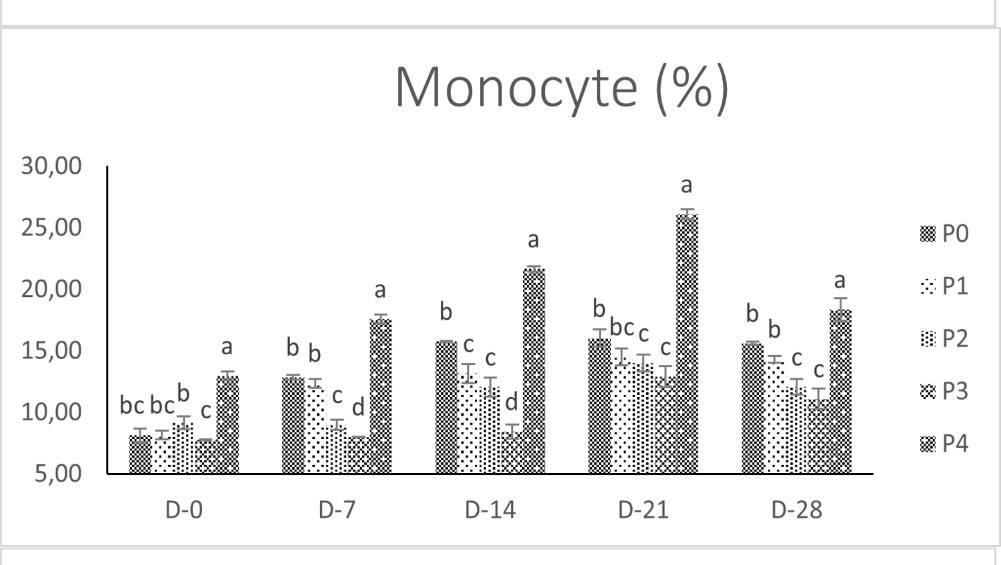Effect of Gracilaria verrucosa Extract as an Immunostimulant on the Non-Specific Immune System of Striped Catfish (Pangasius hypophthalmus)

One of the failures of freshwater fish farming is often caused by the attack of A. hydrophila bacteria. This bacterial attack can be prevented by administering immunostimulants derived from G. verrucosa extract. This study aims to determine the non-specific immune response of striped catfish to Aeromonas hydrophila infection following supplementation of G. verrucosa extract in feed. Five doses were administered in this study: 1 ml, 1.5 ml, and 2 ml per kg of feed, as well as a positive control and a negative control. Blood samples were collected every week after infection, and the parameters observed were total erythrocyte and leucocyte counts, as well as leucocyte differential counts. The results showed that G. verrucosa extract significantly increased blood cell counts. The highest dose was found to be the most effective in increasing the non-specific immune response of striped catfish against A. hydrophila infection
Copyright (c) 2025 Arif Habib Fasya, Laksmi Sulmartiwi, Prayogo, Hairul Hafiz Bin Mahsol, Siska Adelia Sitompul

This work is licensed under a Creative Commons Attribution-NonCommercial-ShareAlike 4.0 International License.



















